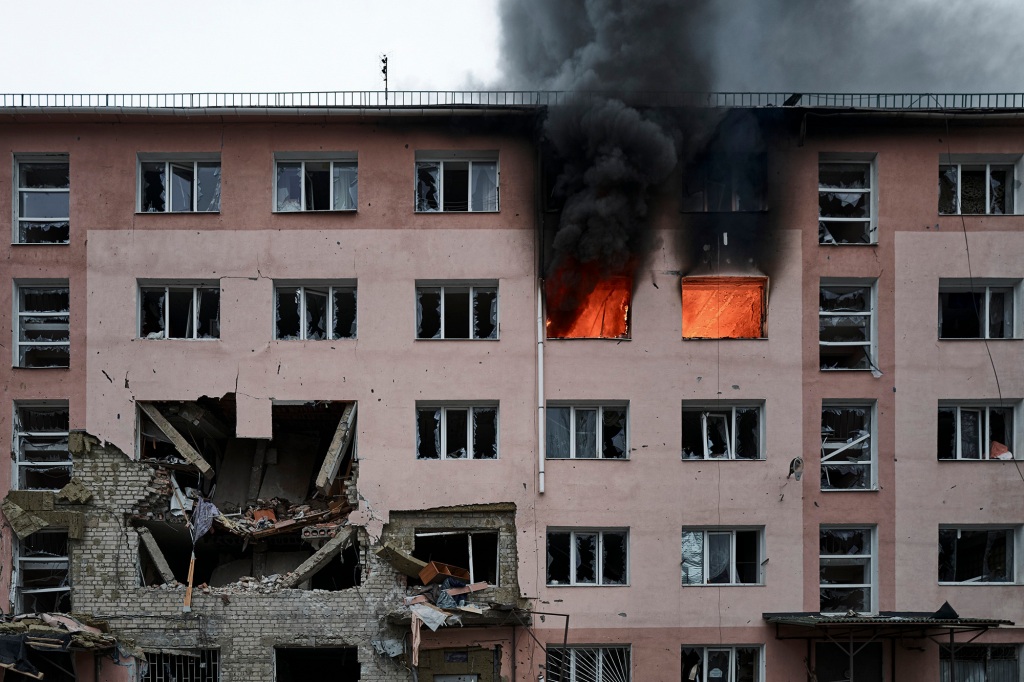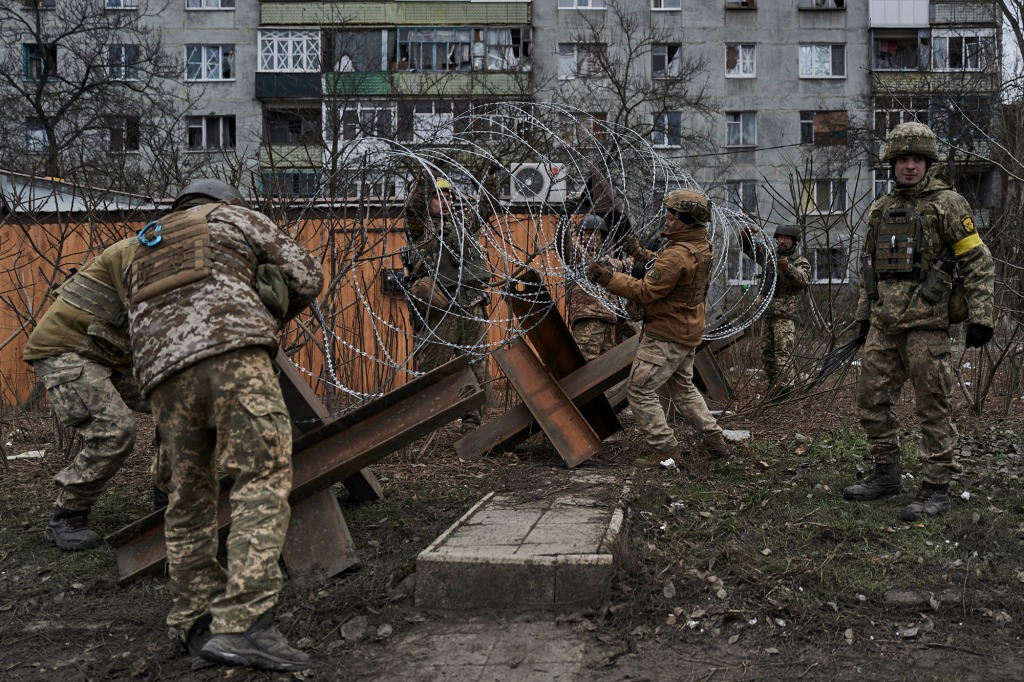Bloody fighting continues in Ukraine as fears Belarus may join war
Fierce fighting continued Wednesday in the eastern Donbas region of Ukraine while continued militarization in Belarus stoked fears the Russian ally could still open up a second front in the nearly 10-month war.
The developments came as Ukrainian President Volodymyr Zelensky visited with President Biden in Washington, DC — his first trip outside of his war-torn nation since Russian troops invaded in February.
The General Staff of the Ukrainian armed forces said Wednesday that Kyiv’s troops had repelled dozens of Russian attacks in the east, while Moscow’s forces continued to shell Bakhmut and the nearby city of Avdiyivka — where the heaviest fighting has been ongoing for months.
The Ukrainian military said that it had responded with its own round of artillery and air strikes.
As Russian and Ukrainian forces trade artillery salvos and Moscow sends repeated air strikes targeting the civilian power grid, the bulk of the on-the-ground fighting in recent weeks has taken place in the Donbas — the eastern industrial heartland made up of the Donetsk and Luhansk provinces.
The Donbas has been the site of conflict since Russian proxy forces claimed the region to be Russian in 2014, part of Moscow’s reaction to the popular ouster of Ukraine’s pro-Putin president, Viktor Yanukovich.
Fighting in the region subsided after two unsuccessful ceasefire attempts brokered in Minsk, the Belarusian capital, in 2014 and 2015.
Russian forces have never taken Bakhmut, but pushed the frontline close to the city in May during a renewed Donbas offensive following their retreat from Kyiv.
The city, which controls minor regional supply lines, has been regularly bombarded throughout the war, and lies largely in ruin. An effort by ground troops to take the city — spearheaded by Russia’s quasi-official paramilitaries in the brutal Wagner Group — has been ongoing without major success for six months.

“Nobody cares about their lives,” a Ukrainian soldier identified only as Yuri told the Wall Street Journal last weekend, speaking of the Russian troops.
“We shoot them, and they keep coming back, like cockroaches. The fields all around us stink because of their corpses, but there is still one wave coming after another,” he said.
Though the bombardment continues, an artillery captain told the paper that the Russians were firing less often than he’d experienced during a deployment to the southern front near Kherson earlier this month.
“I guess the Russians are starting to run out of ammo,” he surmised.
Still, the fighting has ground into a bloody stalemate. Russian forces gained territory near Bakhmut in the fall, but any advance in recent weeks has been incremental and difficult to keep.
Meanwhile, to the north in the Luhansk Province, Ukrainian authorities claimed small successes in a push toward the city of Kreminna, on the outskirts of Severodonetsk.

After success this fall in pushing Russian forces from the neighboring province of Kharkiv, Ukrainian troops stalled just west of the P66 highway, which runs from the north through Kreminna and into Severodonetsk — which was the scene of intense fighting over the summer.
But Serhiy Haidai, Ukrainian governor of the Luhansk Province — which is still almost entirely under Russian control — said Wednesday that Kyiv’s troops were closing in on Kreminna.
“We have a few kilometers left to Kreminna,” he said on the messaging app Telegram. “Progress is slow due to the densely mined territory.”
If confirmed, the movement could be the start of a Ukrainian foothold in occupied Luhansk.
But as the fighting continues on the eastern front, Ukrainian and western analysts fear the reopening of the northern front as Russian President Vladimir Putin appears to be pressuring Belarusian strongman Alexander Lukashenko to join the fight.
Belarus has played host to the Russian military for refit and training since the war began, and provided Putin with a staging ground for his ill-fated march on Kyiv in February.

Lukashenko raised eyebrows earlier this month when he announced a massive internal movement of troops under the guise of counter-terrorism training.
On Monday, Belarus announced the deployment of long-range S-400 anti-aircraft missile batteries, provided by Russia. The announcement was made the same day Putin paid a visit to Belarus, meeting with Lukashenko in Minsk.
“I thank you, Vladimir Vladimirovich, for the fact that on all topics we found mutual understanding, support and made the necessary decisions,” Lukashenko said after the meeting, according to Russian newswire Interfax.
Lukashenko, a staunch Putin ally, has repeatedly said he has no intention of sending his military to fight in Ukraine, which sits along Belarus’ long southern border.
However, the Belarusian government continued to stoke concerns in Kyiv Wednesday when it announced it was temporarily restricting travel to the Gomel region of southwestern Belarus — directly north of the Ukrainian capital.
Read the full article Here


